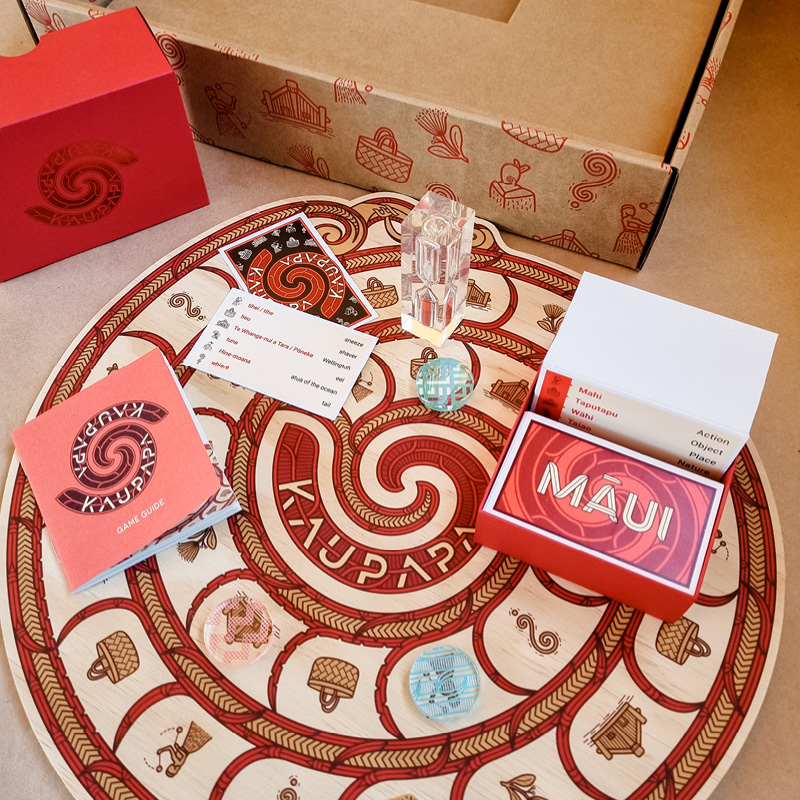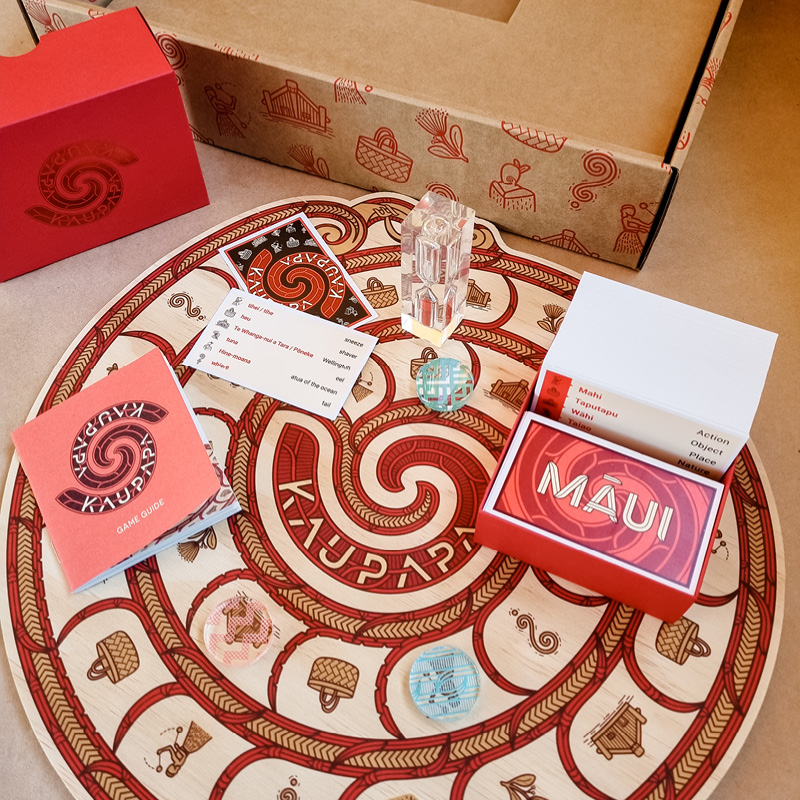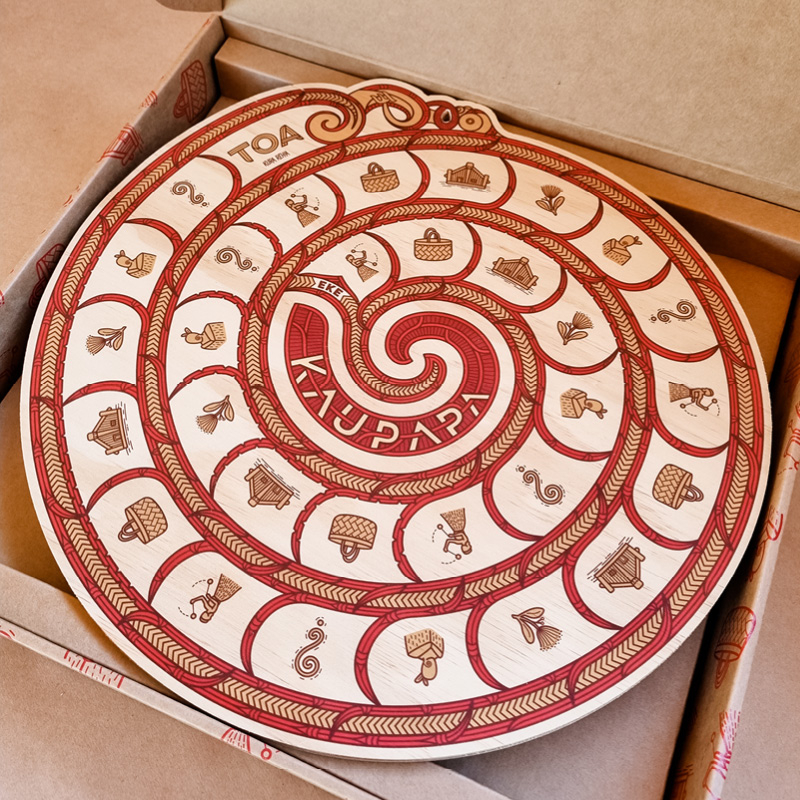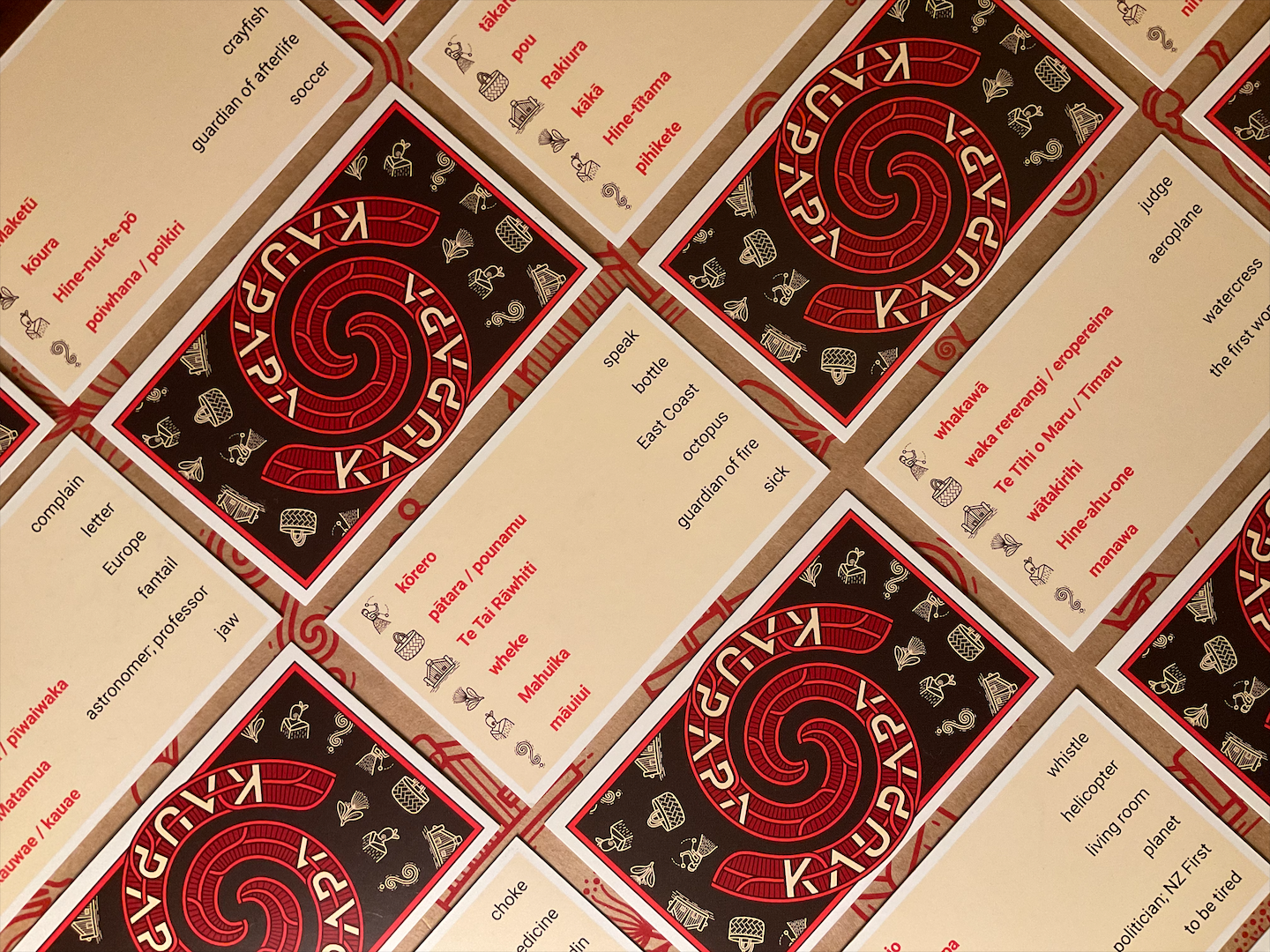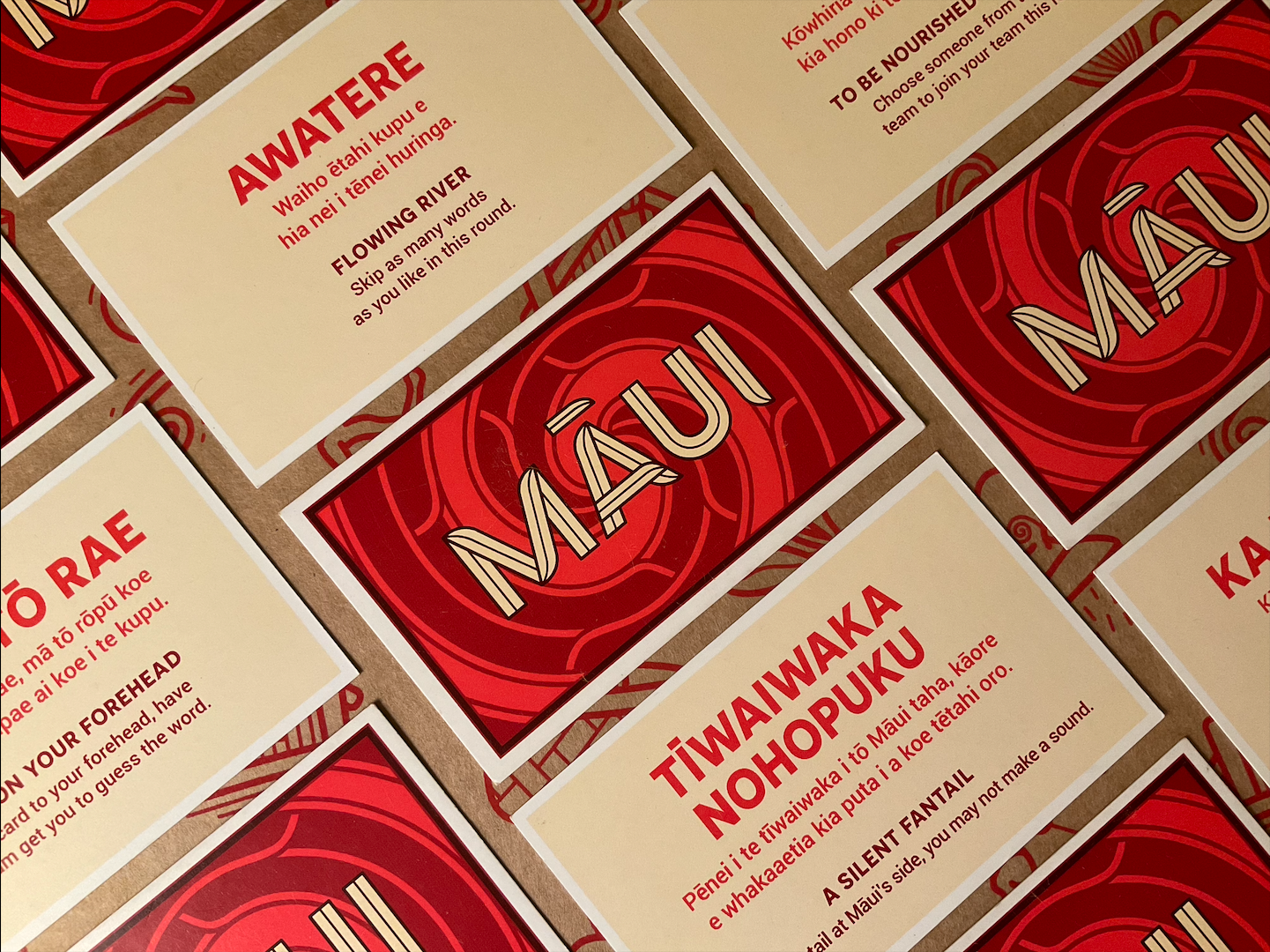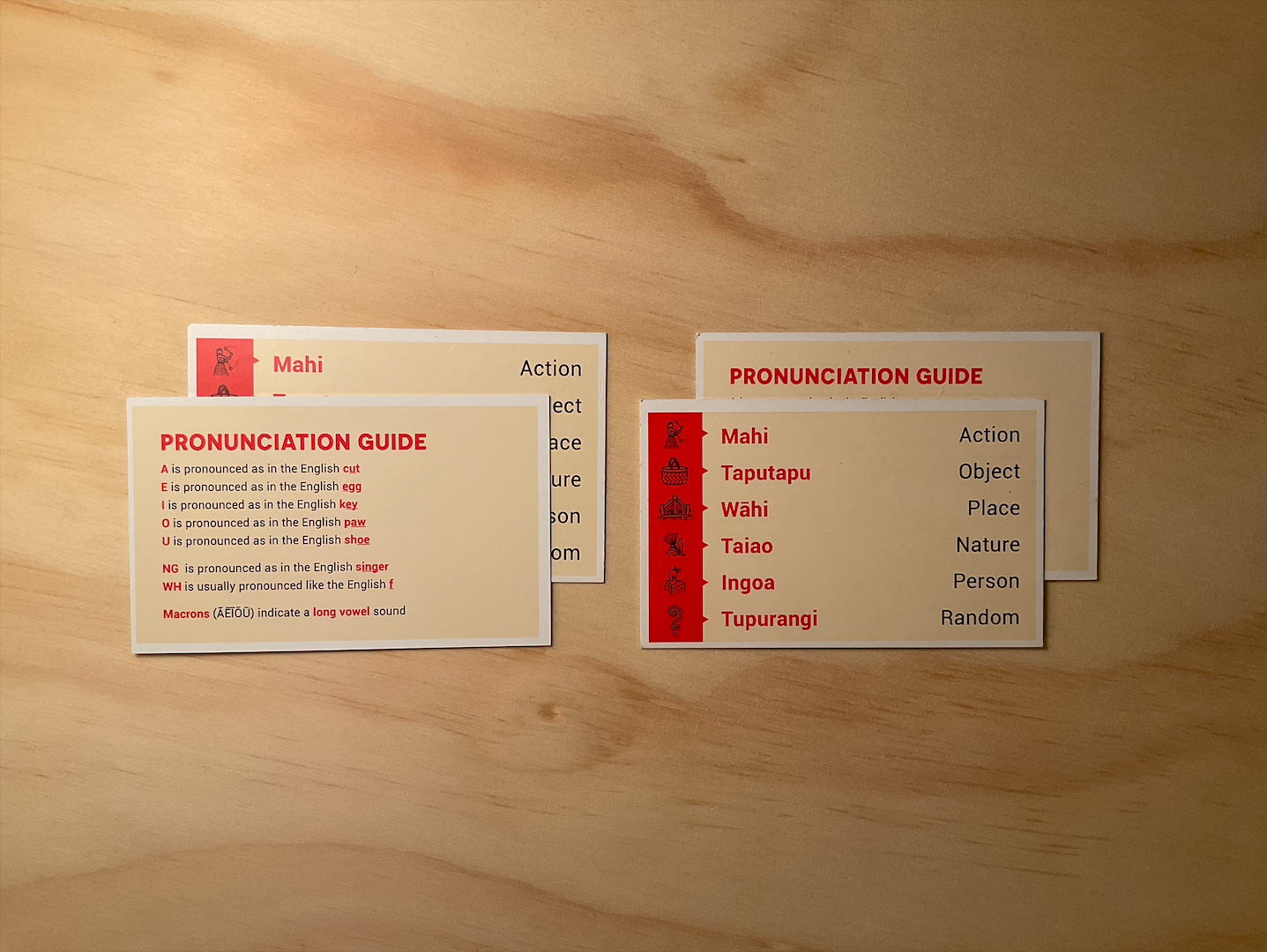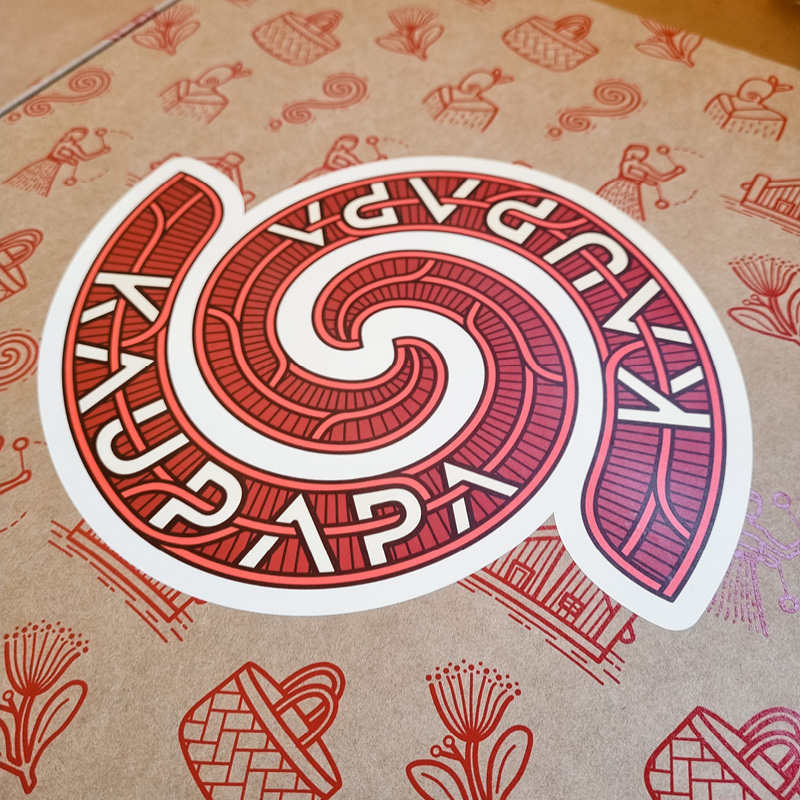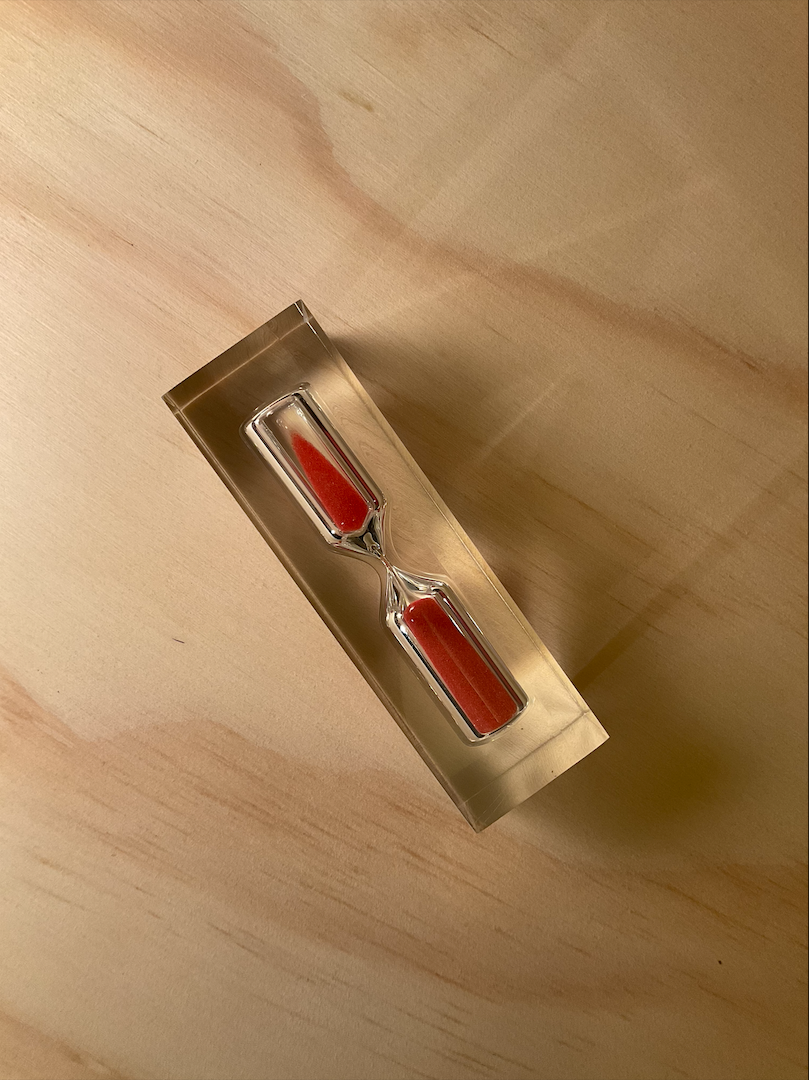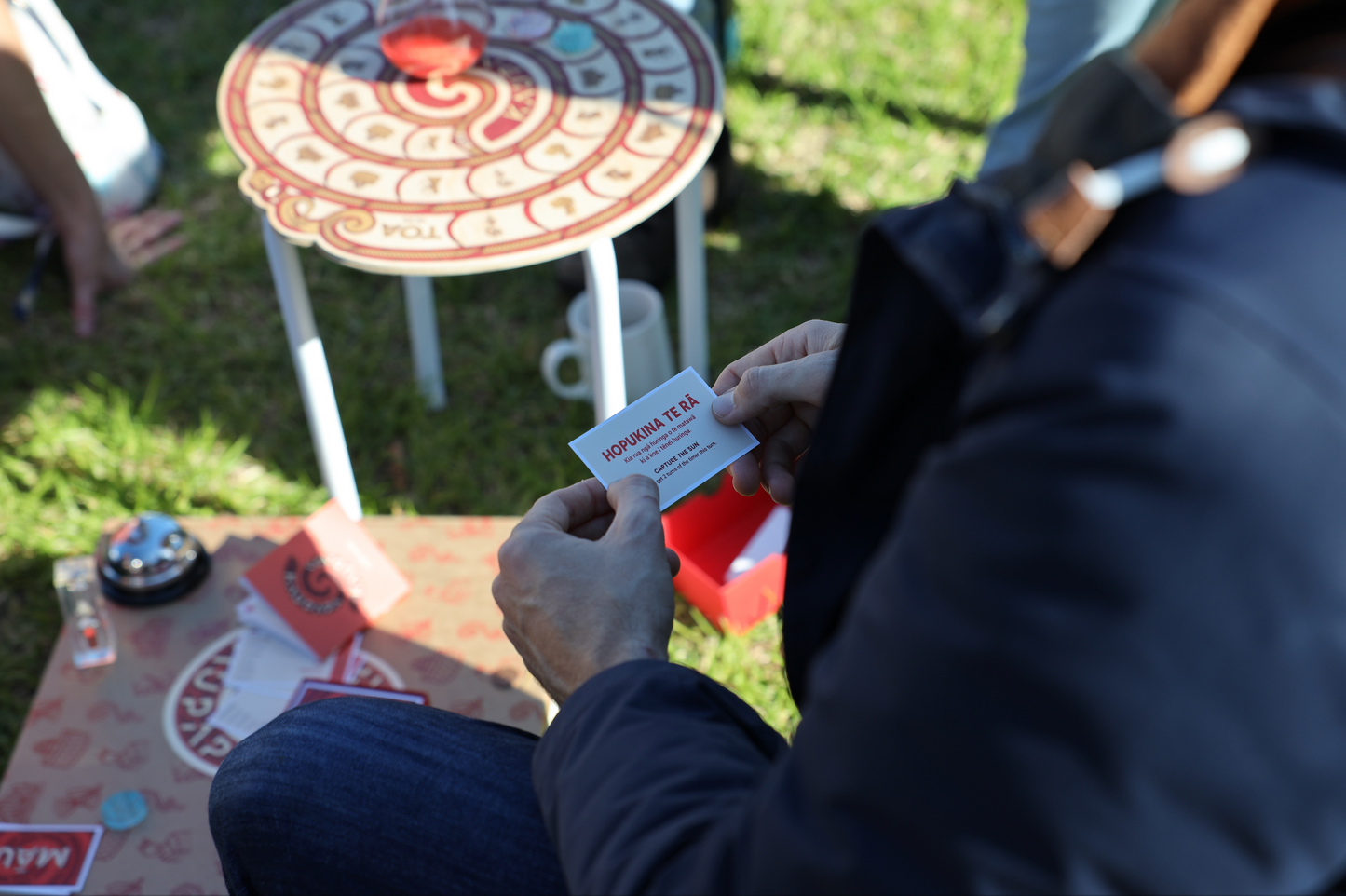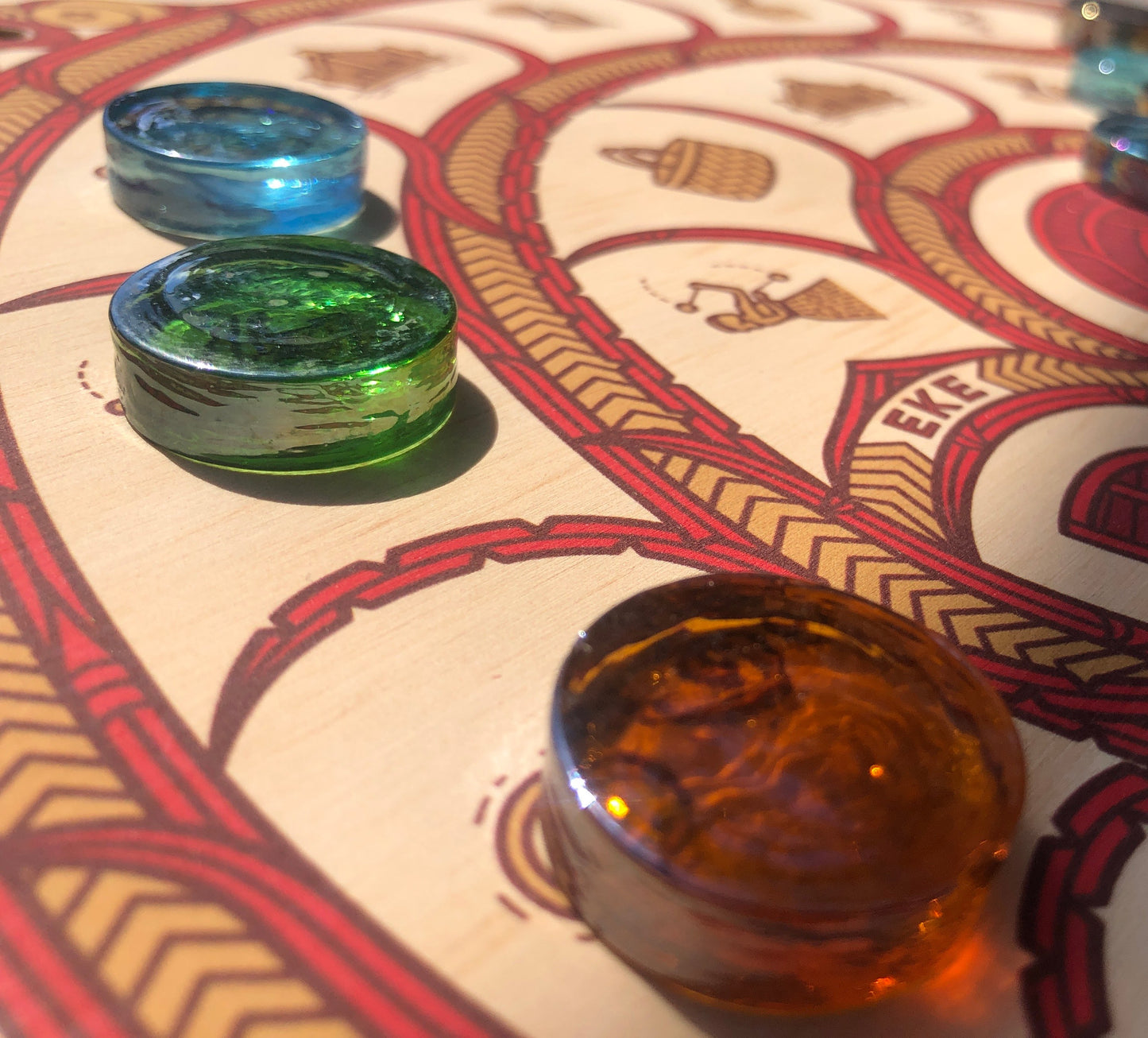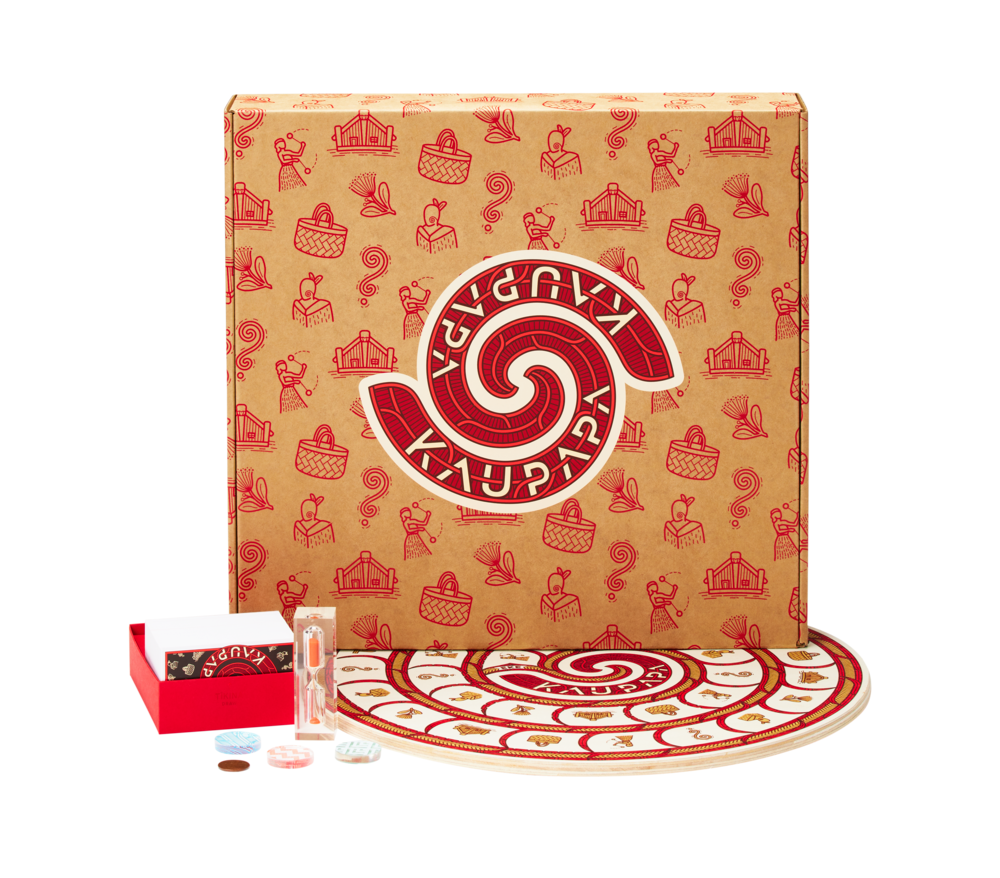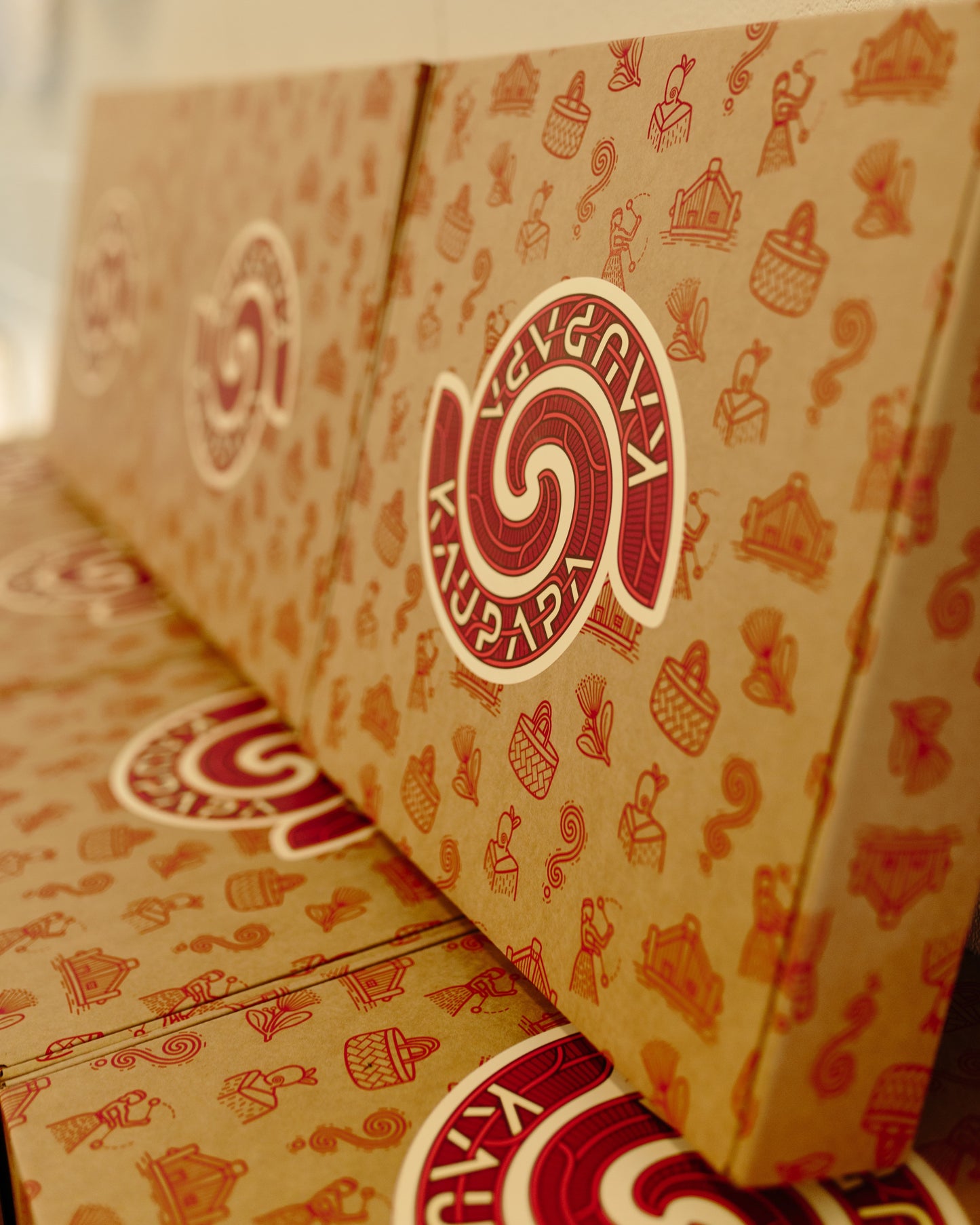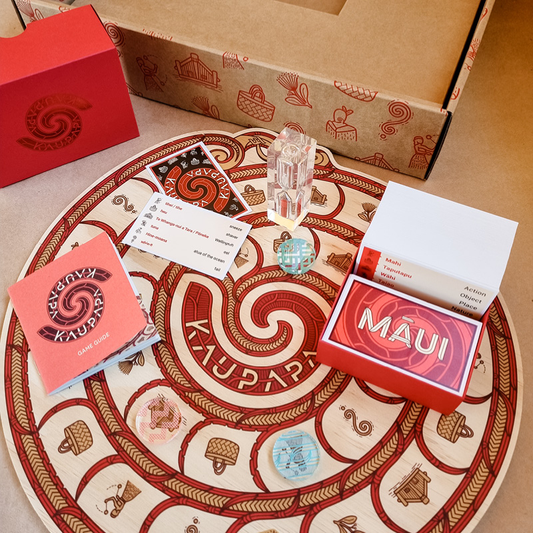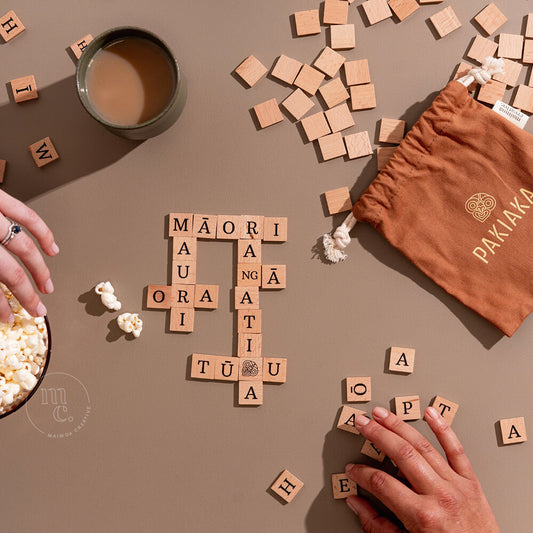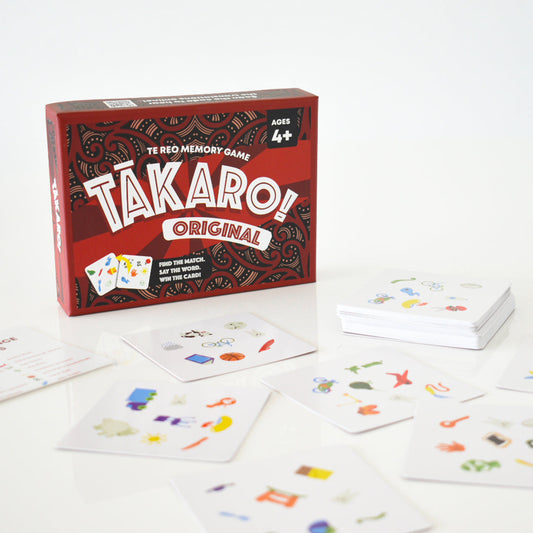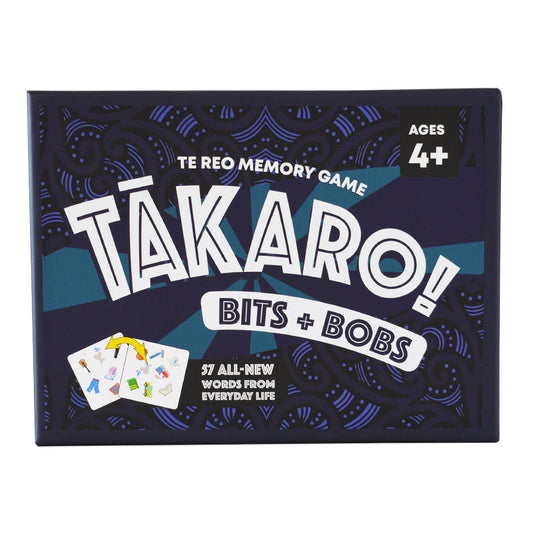We sat down with Co-Founder Rosie, Pou Whakapuāwai Āio, and Pou Hapori Tūī, to hear about the fascinating journey behind the scenes.
When two flatties first started cutting up pieces of paper and handwriting clues in te reo Māori for their own DIY board game, it was just a fun way to use more reo Māori at home. But as word spread, they quickly realised more people wanted a seat at the (very Ngāti Nerdy—in the greatest way) table.
Over years, this creative duo worked to develop Kaupapa, expanding their team, bringing in experts, and consulting with the community to make it the nation sweeping success it’s become today.
The aim? Describe as many kupu Māori to your teammate as possible in one minute to earn moves around the board. After selling more than 6,500 copies, it’s clearly something special.
We sat down with Co-Founder Rosie, Pou Whakapuāwai Āio, and Pou Hapori Tūī, to hear about the fascinating journey behind the scenes.
OK team, to begin in the spirit of honesty—I'm trying to not let my whakamā overwhelm me because you all speak such beautiful reo Māori!
What have your own journeys with te reo involved?
Tūī: My reo Māori journey has been very special to me!
I was a kōhanga kid but went to mainstream school and only spoke English so I forgot all my reo. It wasn’t until I turned 21 that I was able to go to Te Wānanga Takiura and begin to learn my reo again.
To be able to reconnect to my language and my culture has been truly transformational for me. Being a part of Kura Rēhia has been another space for me to grow in my reo journey and help others to grow too!
Āio: As a kaiako Reo Māori, I understand how challenging it can be to navigate whakamā when reconnecting with the language, especially for Māori who carry the weight of colonisation and the loss of their reo.
I feel deeply grateful that my parents took on the difficult journey of reclaiming the language for our whānau. Because of their efforts—and because they enrolled us in Kura Kaupapa Māori and Kōhanga Reo—my siblings and I were fortunate to grow up with te reo Māori and didn’t have to struggle to learn it.
Kura Rēhia draws inspiration from the whakataukī "Kia kawea tātou e te rēhia," which means, "Let us be carried by the spirit of play." We believe that rēhia, play, provides a pathway to move past whakamā. Often, we put pressure on ourselves to be perfect, which can make learning stressful. But through play and games, perfection isn’t the goal—connection and enjoyment are. That’s why we aim to create games and resources that make learning te reo Māori fun and accessible. I hope that step by step, all Māori can gently move past whakamā and reconnect with their reo in a way that feels right for them.
Rosie: Āe! I started learning as an adult, so I know well the humbling experience of being a fully-grown adult with the speaking skills of a toddler! When I was studying at Toi Whakaari, our amazing kaiako Māori shared tikanga and reo with us in such a layered and experiential way—it really planted the seed. That seed has been nurtured by incredible kaiako at Te Wānanga o Aotearoa, Te Wānanga Takiura, Te Ahu o te Reo and kura reo but also amongst friends.

Kia ora koutou!
A big part of Kaupapa is about bringing more fun into the learning journey, because let’s be honest—it’s not ALWAYS super enjoyable.
Can one of you share with us your most NOT fun moment from your learning journey?
Tūī: Yikes! You’re right. Learning any new language has its challenging moments for sure. For me, a not fun moment I won’t forget is the first time I walked into a classroom that only spoke te reo Māori and felt so confused when the kaiako was instructing me in te reo.
I felt like a deer in headlights, she was staring at me after she spoke and I was trying to read her facial expressions and body language to figure out what she was telling me.
I managed to figure out what she was telling me to do, but bro that was nerve wracking as! Many more moments like that happened before I finally began to understand what was being said.
So you are human! Thanks Tūī.
Who is playing ‘Kaupapa’ and how is it making their learning journey more fun?
Tūī: The Kaupapa community is so diverse. We have new speakers, expert reo speakers, and everyone in between.
At our Kapa Tākaro Playtest the other night, we were joined by two wāhine who had just moved to Aotearoa from India a few days earlier, and a guy from the Philippines. None of them had spoken te reo Māori before, but they were so excited to give it a go. It’s incredible to see how people from all walks of life are connecting with the game and discovering the language.
Rosie: Absolutely! The common thread is that these are people who enjoy having fun. Kaupapa is an easy, joyful way to connect with each other and te ao Māori. It’s not asking you to engage in anything heavy—it’s just a board game, but it creates a beautiful space for people to come together and spark connection.
For many of us, we want to use the reo we have but it can feel daunting—thinking of what to say and how to say it in a new language is a lot. Kaupapa makes it easier by feeding you words and giving you topics to talk about. It shifts the pressure into a playful kind of challenge, rather than a stressful one, and lets you enjoy the satisfaction of achieving something together as a team.
Āio: The kēmu is designed for everyone, no matter where they’re at on their reo journey. Beginners can start simple by saying the Māori word and explaining it in English. Intermediate players might go bilingual, while advanced players can dive into full te reo Māori. The flexibility means everyone can be included, and it challenges people to step up in a way that feels comfortable for them.
Rosie: One of my favourite things is seeing different personalities shine through while playing. Some people are naturally loud and confident, while others are quieter—and they’re often the ones who surprise us with an incredible puna kupu they’ve kept on the down low! Kaupapa can be great for changing up the dynamic, giving everyone their moment to shine, whether they’re describing or guessing. It’s all about fun, laughter, and learning together.
I know your process has been incredibly collaborative,with regular community playtesting sessions.
Have there been any key insights from those that led you to rethink aspects of the game?
Rosie: For Kaupapa, we spent three years playtesting before it was ready, constantly refining what worked and adjusting what didn’t.
In its early form, the game was designed for people who could already string sentences together. But during an event at the Māoriland Hub, some of my aunties, who only knew a handful of kupu, were eager to join in. At first, we weren’t sure how to adapt the game for them, but then an 8-year-old kōtiro, in the spirit of manaakitanga, picked up a card and said, “It’s getting cold, I’m going to put on my kōti,” using the word "kōti" (coat) in context.
That moment was transformative. It sparked the idea of Kaupapa as a tool to grow your puna kupu (vocabulary) one word at a time and led to the development of its three distinct modes of play. We credit that kōtiro’s creativity and kindness for helping us reimagine the game’s potential to include everyone, no matter their language level.
In my head working day to day in your pakihi making games must look and work kinda like Santa’s workshop or Willy Wonka’s factory… but Māori styles….
Is that true?
Rosie: Do you think Santa uses a heck-tonne of spreadsheets? If so then yes, exactly like that 😁.
I can see it now... 😉.
The design of your kēmu/game is so beautiful, what are some of the whakaaro/ideas behind that?
Rosie: The design of Kaupapa was a true team effort with countless iterations throughout the process of bringing it to life!
Kuruho Wereta created the board design with patterns and ideas drawn from his deep experience with whakairo (carving) and te taiao (nature).
Aroha from Maimoa Creative worked her magic turning our dining-table-sized hand-drawn board into a digital file. She also created all the icons and did the graphic design, making everything look cohesive and beautiful.
With my background in filmmaking design, I focused on how the game could encourage interaction and storytelling. The Māui cards, for example, were created to weave in pūrākau and add an element of surprise and spice things up. It’s been so rewarding to see how small details, like these cards, can shape the way we play and connect.
We were also very intentional about the materials. We’re conscious of the resources that go into creating something new, so we wanted to honour that through quality. The board is made from solid plywood here in Aotearoa, and the timer is crafted from solid resin—it’s a game that’s designed to last and feel like a taonga that can be cherished and enjoyed for years to come.
You’ve sold more than 6,500 copies of this game, got into big mainstream stores like Whitcoulls and been featured in heaps of press.
What’s been the key to your success?
The community is definitely the secret sauce. Getting stocked in Whitcoulls happened because of the superfans of the game—Whitcoulls actually called us after so many people asked for it in their stores! A kind human reached out and volunteered to add Kaupapa to BoardGameGeek so he could give it a 5-star rating there. The involvement of icons Hēmi Kelly (Everyday Māori) and Aroha Tamihana (Maimoa Creative) have also brought things to another level. The opportunities we’ve had have come through people’s excitement, generosity, and aroha and we are so grateful. 🥹
What have been the hardest parts along the way?
Honestly, it is a huge labour of love. We didn’t enter into it with a business plan– our drive was simply to share this game with the world. Every step of the journey has been a steep learning curve, but we’ve poured our hearts into it because we believe in it.
Because we’ve been uncompromising with the quality, environmental and ethical nature of the production, each game costs us a lot to produce. It’s a challenging balancing act because we also want to make it as accessible as possible to whānau.
Coordinating each production run is a challenge—there are so many parts, and if even one isn’t ready or up to standard, it holds everything upl. One Christmas, for example, everything was set except the timers. We ended up sending the rest of the game in time for Christmas, with the timers following later! 🙃
For the past few years, we’ve been working full-time jobs while dedicating our evenings and weekends to Kura Rēhia. It’s been rewarding but exhausting—like we’ve been giving it just enough oxygen to keep it alive but not enough to help it truly grow. To take Kaupapa to the next level, we’ve realised we need a full-time team who can focus on nurturing and growing this kaupapa, so it’s time to sell some more games and work towards that.
On that… can we get any insider hints about what’s coming next from Kura Rēhia?
Āio: Alongside our incredible playtesting crew, we're developing a series of expansion packs for Kaupapa, featuring more words, Māui cards, and kupu whakarite. We’re also excited to be working on a new game called TIPU, created in collaboration with the incredibly talented illustrator Sara Moana, designed especially for brand-new learners of te reo Māori.
We’ve also recently created the first ever giant Kaupapa table, which now lives at the ReoSpace at UoA- and we’ve got some orders for more.
We’re always looking for new playtesters to help us test out unreleased games. If that sounds like you, we’d love for you to join the Kapa Tākaro!
Last pātai and a very important one; Christmas day is approaching and I’ve got Kaupapa lined up for the arvo, what are some top tips to make sure I beat Te Arawhata Marketing Manager/my cuzzy Grace?
…Well, we have actually made Quizlet and Blooket sets of all the kupu in Kaupapa, so you can stealthily study the words! And we also made a resource with lots of helpful words, phrases and structures for all the ways to describe things, which you can download here.
Epic. Ngā mihi team!
(You're going down cuz)


